Zawiercie 2024-01-15
CMK Central Railway Main Line.
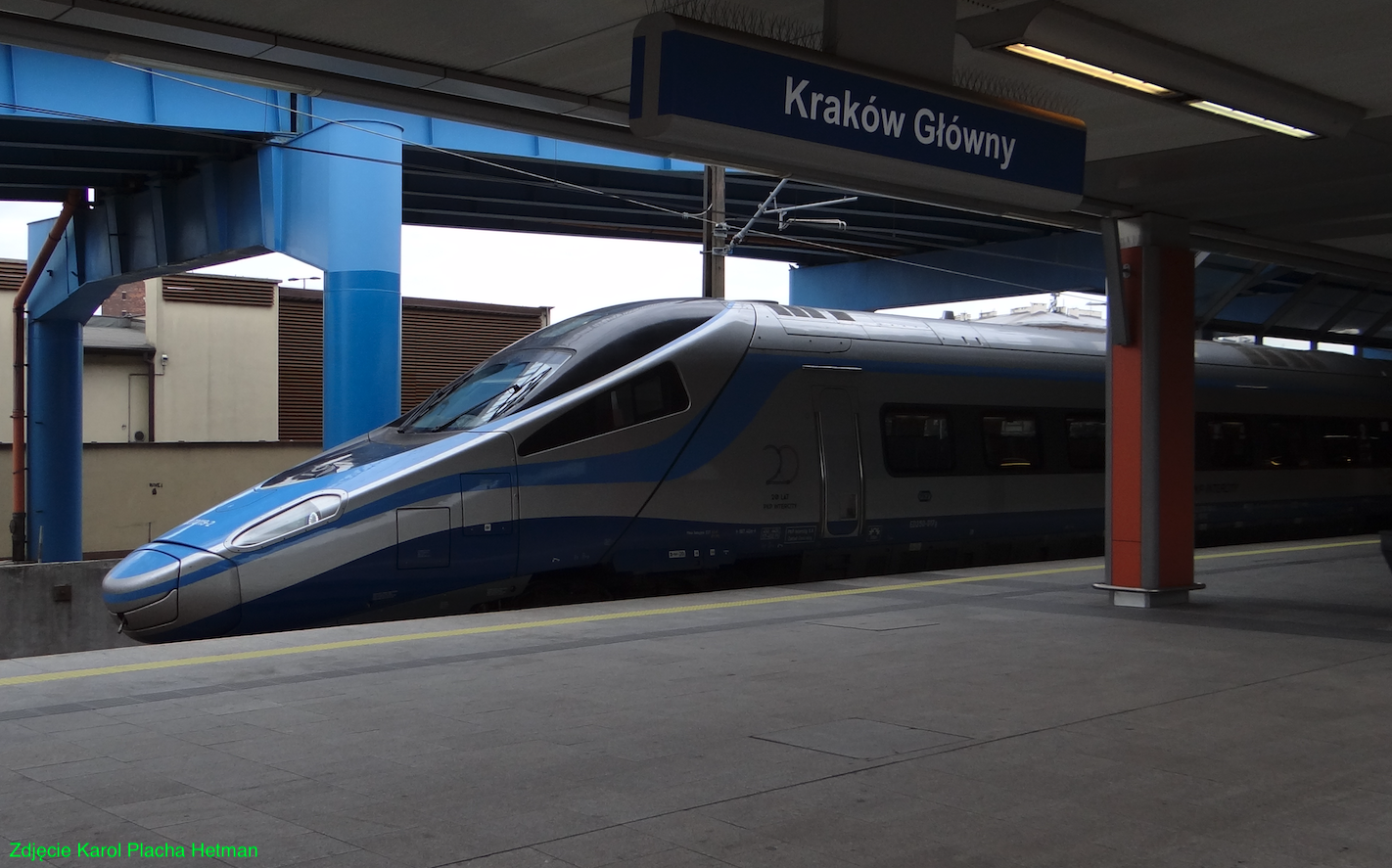
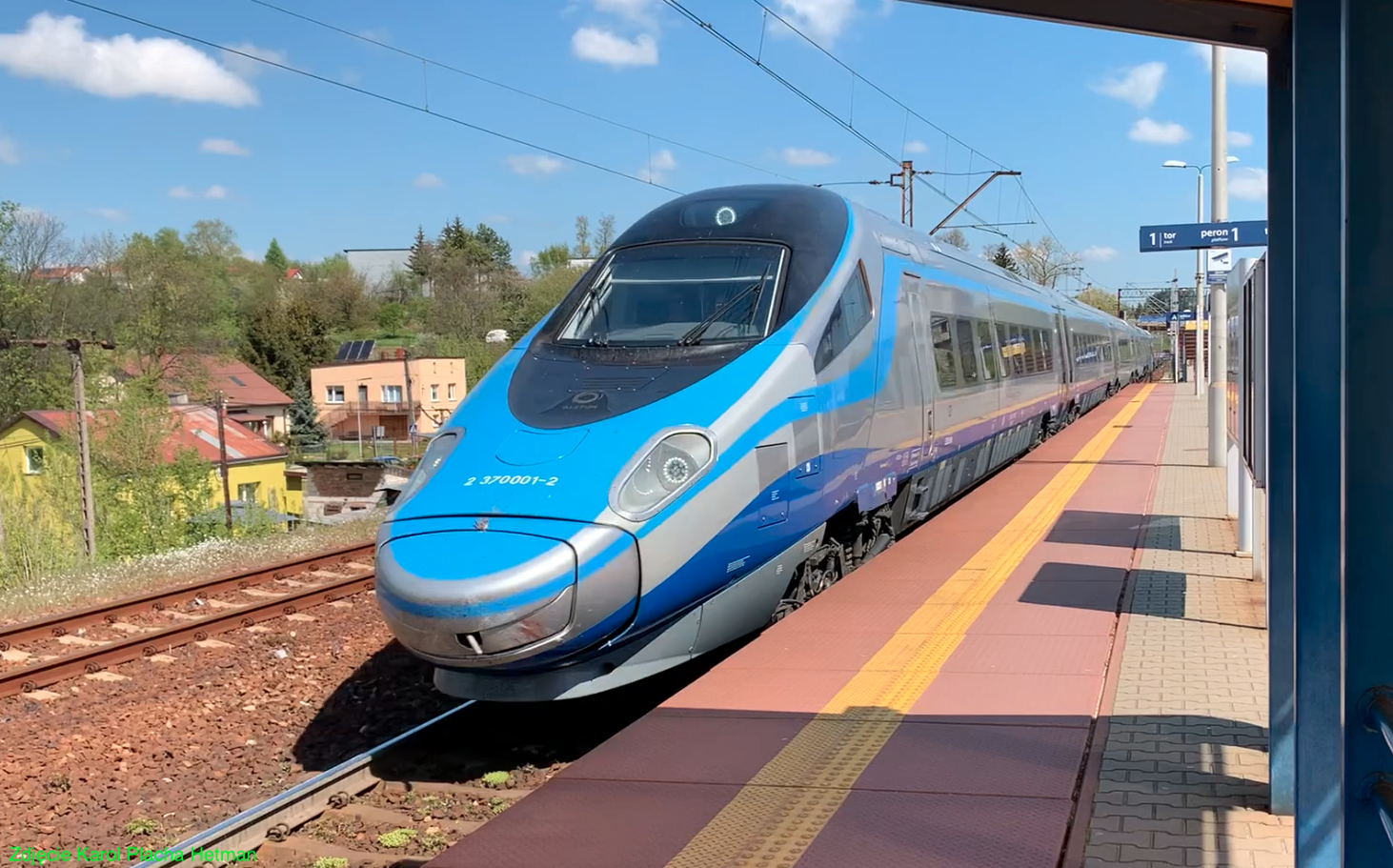
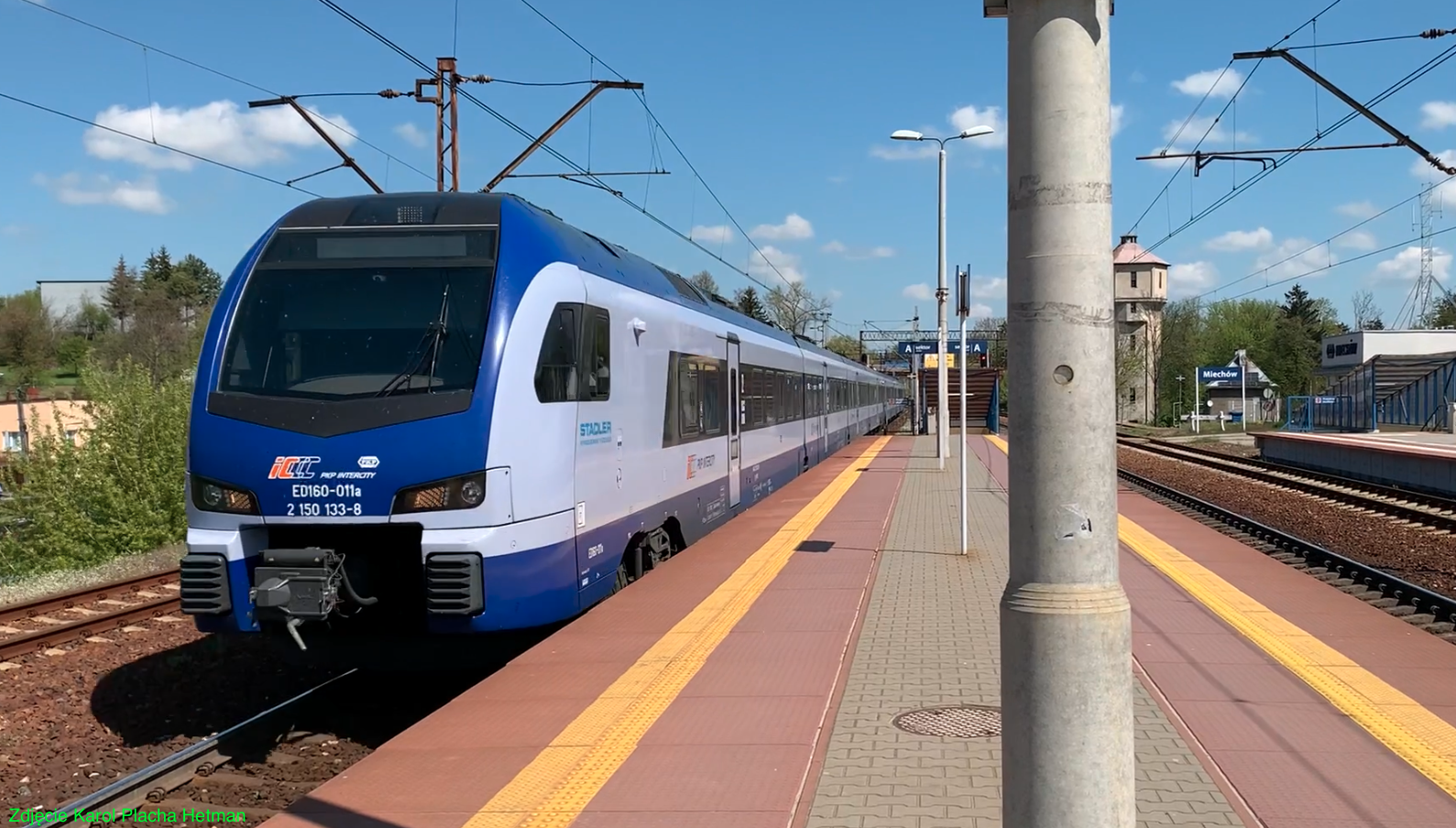
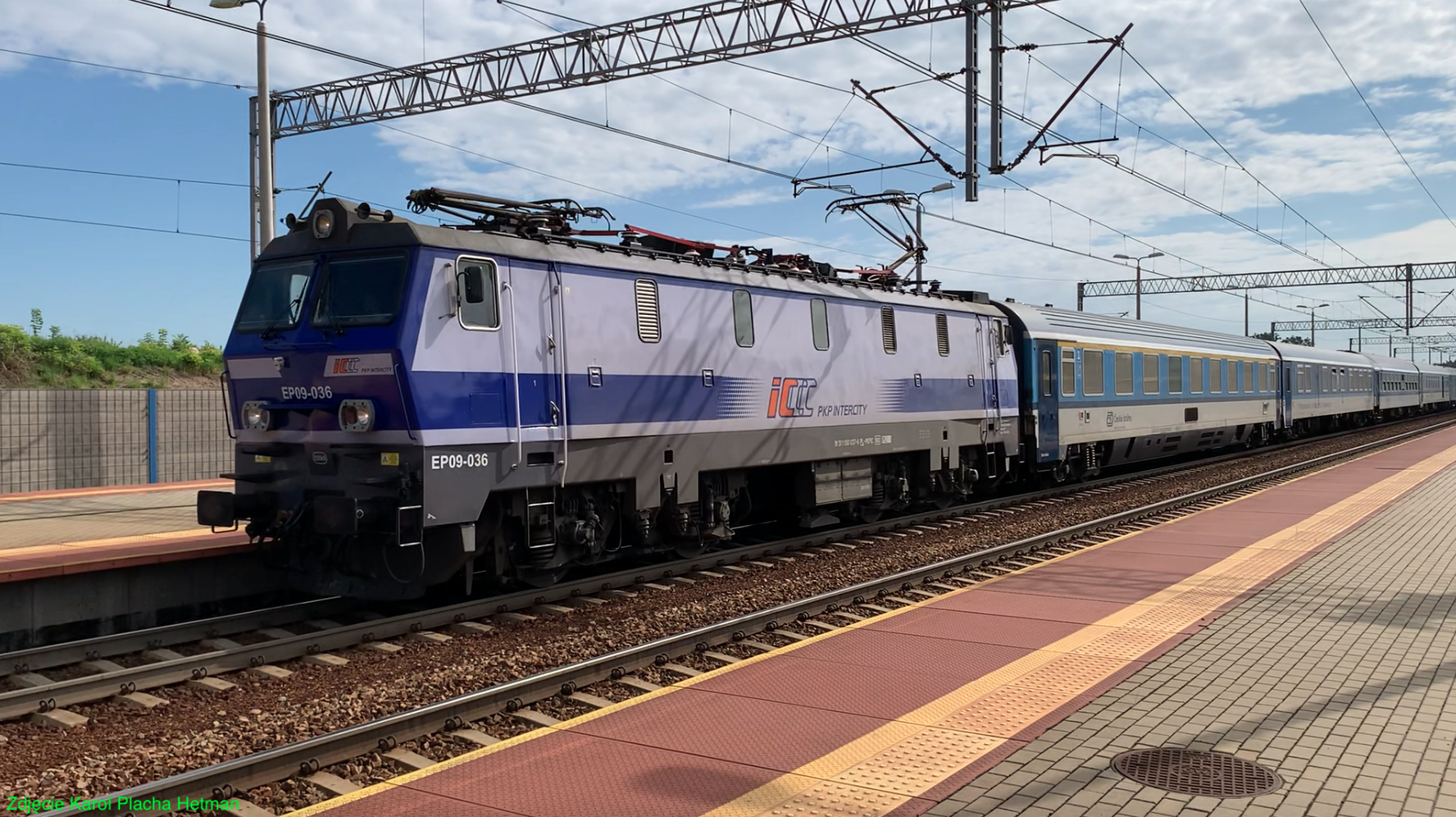
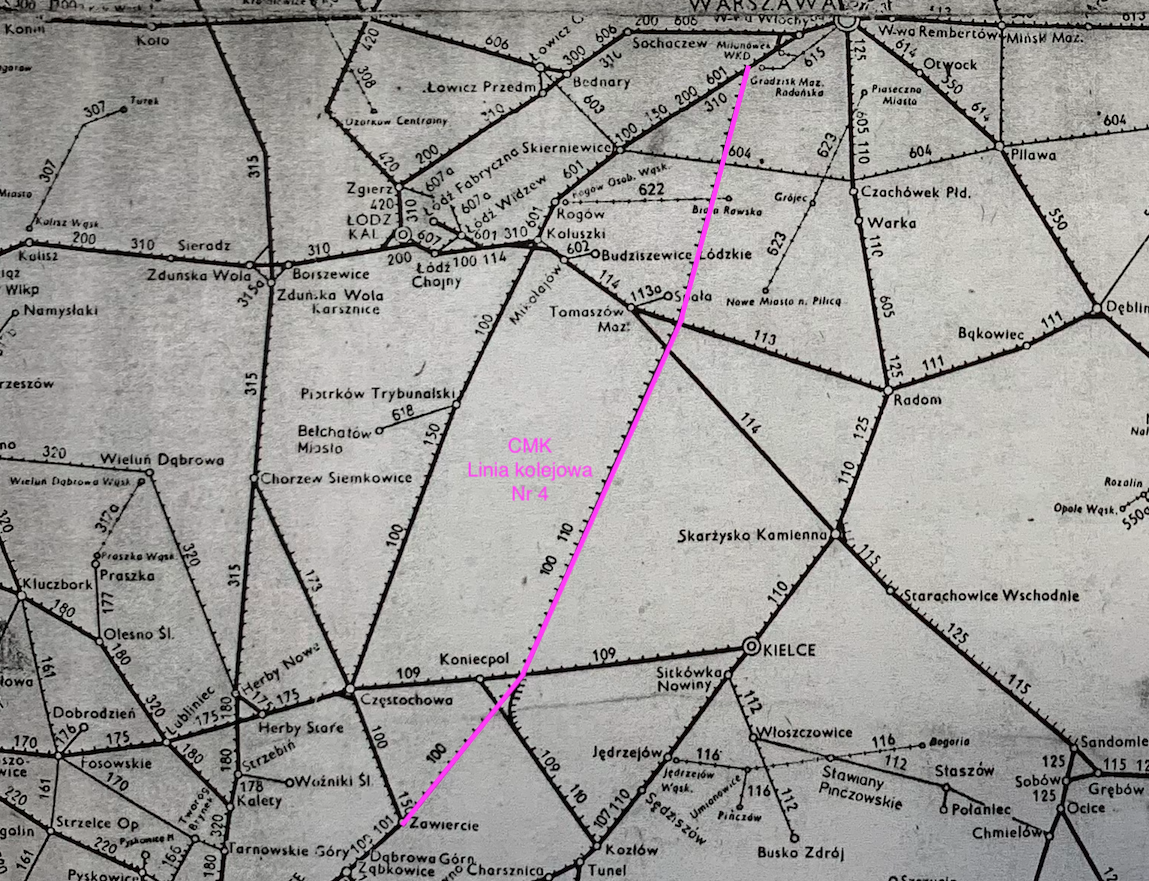
PKP Railway line No. 4.
In 1970, in Poland ruled by communists, another economic crisis occurred. As a result, stores lacked basic food products, clothes and shoes. Social revolts have been reported. The communists took the army and ZOMO onto the city streets to bring peace. Weapons were used and the dead and wounded were killed. To save the situation, the communists introduced changes at the highest levels of power, i.e. in the Polish United Workers' Party. On December 20, 1970, Edward Gierek became the first secretary of the Polish United Workers' Party. And once again, society believed that socialism could have a human face. The economic reforms introduced by the new team gave hope that the situation would improve. But only until 1976, when the communists took tanks to the streets of Radom, against the society.
But let's go back to the beginning of the 1970s. The new government has undertaken an ambitious program of economic reforms, increasing the supply of basic social goods, as well as new investments; in the form of construction of new industrial plants, new roads and new railway routes. Already on February 4, 1970, the Presidium of the Government of the Polish People's Republic decided to build a completely new railway line, but there were no funds for it in the state budget.
In the 1970s, two of the largest railway investments during socialism were made in the Polish People's Republic. The first one was the Metallurgical and Sulfur Line (LHS), currently the Broad Gauge Metallurgical Line. The second one was the CMK Central Railway Line. Both investments have been completed, although the latter in a shortened form (without the northern section).
Central Railway Line CMK No. 4.
The CMK Central Railway Line is a double-track electrified railway line that connected Grodzisk Mazowiecki - Zawiercie and was marked as; railway line No. 4.
Until the beginning of the 1970s, in the meridional direction, PKP had: the historic "Wiedenka" (railway line No. 1). Coal main line, Kalety - Kępno section from 1926. Coal main line, section Nowa Wieś Wielka - Gdynia from 1930. Coal main line, section Nowe Herby - Inowrocław from 1933. The Warszawa Zachodnia – Kraków Główny railway line (railway line No. 8) from 1934. There was also a historical line from Iwanogrodzko to Dąbrowska, which partially overlapped with line No. 8.
All these routes were very busy with the transport of goods and passengers. The time has come to fulfill the dreams of railway workers about the rapid transport of goods from Silesia and Zagłębie Dąbrowskie to the ports on the Baltic Sea, especially Gdynia and Gdańsk. Mainly hard coal and coke were exported, and Swedish iron ore was imported, much better than those from Moscow. Magnetite ores were imported from Sweden, with a very high percentage of iron, 55 to 70%.
It was decided to divide the CMK into 4 stages: Zawiercie - Idzikowice (143 km), to be implemented in the period 1971–1974. Idzikowice – Grodzisk Mazowiecki – Warsaw (80 km), to be implemented in the period 1974–1977. Korytów – Wyszogród – Płock (96 km), to be implemented in the period 1977–1985. Płock - Gdańsk, (approximately 250 km), to be implemented after 1985. Ultimately, only two of the four stages of the original CMK construction project were completed.
The construction of CMK began on June 16, 1971, under the new authorities. The first shovel was grounded in Psary, in the presence of representatives of the Ministry of Communication, local authorities, the union of PRK (Railway Works Enterprise) and other contractors. The construction of CMK began in June 1971 and was completed in 1977, without the construction of the CMK Północ section, although some investments had already been made.
Railway line No. 4 is currently 223.824 km long, double-tracked, with a rail gauge of 1,435 mm, fully electrified with 3 kV DC, with a maximum speed of 200 km/h, with the prospect of increasing the speed of passenger trains to 250 km/h. CMK runs through the following voivodeships: Masovia, Łódź, Świętokrzyskie and Silesia. The rope is of national and European importance, as part of the E 65 line. There are 11 railway stations and 3 branch posts on the CMK.
The European Train Control System (ETCS) was introduced at CMK, i.e. a railway traffic control system compatible between various European countries.
History of CMK.
The detailed design of CMK (the first two stages) was created in the spring of 1971, although preliminary plans were already in place at the end of the 1960s. The trail was designed for a speed of 250 km/h. The curves on the trail have a radius of 4,000 m and are larger than those in France on TGV routes (3,800 m). There was also a large distance between the axes of adjacent tracks, which was 4.50 m. In fact, the distance between the rails of adjacent tracks is as much as 3.065 m. Until now, distances of 2.50 m - 2.80 m were used. Line geometry, railway road, tracks , the turnouts are adapted to a train speed of 250 km/h. The traction network is adapted to a speed of 220-250 km/h. The current carrying capacity is from 1,725 to 2,540 A. Efforts are being made to install 3 kV DC traction for speeds up to 300 km/h. An automatic four-point linear lock was installed, which makes maximum use of the CMK capacity (installed in 1985–1986). The load on the rails is 22,500 kg/axle. As of December 31, 2022, the maximum train speed is 200 km/h on most of the route.
The opening of railway traffic took place on December 23, 1977, on the Grodzisk Mazowiecki - Szeligi section. On June 15, 1977, on the Szeligi - Idzikowice section, and on September 26, 1974, Idzikowice - Zawiercie.
Electrification: on December 23, 1977, Grodzisk Mazowiecki - Szeligi. On June 17, 1977, Szeligi - Idzikowice. On December 30, 1975, Włoszczowa Północ - Idzikowice. On May 31, 1975, Zawiercie - Włoszczowa Północ.
Train traffic.
Initially, only freight trains ran on the CMK, operated mainly by ET21 and ET22 electric locomotives. In addition to freight trains, there were echelons, i.e. military trains. They were sent from Silesia and the Krakow region to training grounds operating in northern Poland.
After martial law, in 1984, the first express passenger trains were sent to CMK. On June 3, 1984, with the entry into force of the timetable for the next 12 months (1984-1985), two pairs of express trains started running on CMK: "Górnik" Warsaw - Katowice - Gliwice and "Krakus" Warsaw - Kraków. The electric locomotive EU05 (Škoda 44E) was used for the trains. Thirty locomotives of this type were ordered by PKP. Express trains were driven by electric locomotives. At the end of the 1960s, EU05 locomotives regularly ran the "Hutnik" express train on the Warsaw - Prague ("Wiedenka") route. At CMK, the EU05 locomotive reached a speed of 140 km/h, which was the limit of its capabilities. But 140 km/h was still a success. EU07 locomotives drove trains at a speed of 125 km/h (since 1963).
The modernized EP05 locomotive reached a speed of 160 km/h. This was achieved by changing the gear ratio. But the EP05 locomotive ran erratically and lacked power. Therefore, trains on CMK were served by two EP05 electric locomotives.
The introduction of passenger trains to the CMK, especially on the then priority Warsaw - Katowice route, shortened the journey by 60-90 minutes. But let's remember that these trains did not have any important cities on the route.
A new electric locomotive had to be designed and built for the CMK route. The EP23 locomotive program based on the ET22 was abandoned because analyzes showed that it would not meet expectations. When designing a new electric locomotive, there was no risk of program failure, as was the case with the SP47 series diesel locomotive a few years earlier. This is how the EP09 electric locomotive was created, which drove passenger trains on the Central Railway Station at a speed of 160 km/h.
On May 15, 1988, EP09 locomotives were approved for operation and allowed to move CMK at a speed of 160 km/h. When the new timetable came into force on May 29, 1988, locomotives made their debut in passenger transport. At that time, the timetable was changed once a year, at the turn of May and June, on a Monday. The EP09-001 locomotive pulled the "Krakus" train (Warszawa Centralna - Kraków Główny), replacing the EP05 locomotive. While driving, a speed of 160 km/h was easily achieved. The average travel speed was 106.5 km/h. The journey lasted 2 hours 45 minutes. The "Górnik" Warsaw - Katowice express with the EP09 locomotive covered the distance in 2 hours 42 minutes.
In the following years, journey times on both routes for trains with the EP09 locomotive ranged from 2 hours 40 minutes to 2 hours 50 minutes. All at a maximum speed of 160 km/h. International trains "Praha" and "Sobieski" also ran along the CMK route. The shortest journey time was 2 hours 23 minutes. Since 2010, journey times have been extended because the CMK was modernized. The speech lasts from 2 hours 40 minutes to 3 hours.
Modernization of CMK.
In 1993, the replacement of reinforced concrete sleepers with pre-stressed concrete sleepers began at CMK. Instead of screw fastenings, spring fastenings were used. For the first time, modern machines for replacing the trackbed and surface were used at the Polish State Railways. Until 2001, the Zawiercie - Psary section was modernized in this way.
In 2000, the Psary station began to be modernized to adapt it to trains traveling at a speed of 250 km/h. Modern turnouts with movable crossing points began to be installed. These were the first turnouts of this type in Poland. Currently (2024) this type of turnouts are installed on other routes in Poland. During subsequent modernizations, turnouts with movable crossing points were not always installed at other CMK stations.
A new traction network was installed on the Psary - Góra Włodowska route, over a distance of approximately 7 km, which allows travel at a speed of at least 250 km/h, using the classic 3 kV DC power supply in Poland. The tests turned out well and this type of network was installed on subsequent sections of the CMK. This new network is of the heavy type. There are two contact wires with a cross-section of 440 mm square. The wire is made of copper with additives. It carries a load of up to 3,200 A. One of the cables is suspended on two supporting lines.
In March 2006, construction of the platform at the Włoszczowa Północ station began. On October 16, 2006, InterCity trains began to stop here. The second platform at this station was opened on August 11, 2017.
Since PKP Intercity purchased 20 ED250 Pendolino EMU trains, the modernization of CMK was continued. In the period 2010–2014, the Włoszczowa Płn. – Olszamowice section was modernized. As a result of soil testing, it turned out that there were places that required strengthening by piling. The last rail and road crossings were closed and viaducts were built. On March 1, 2013, the modernization of the Grodzisk Mazowiecki - Idzikowice section, 80.60 km long, began. Rails, turnouts and selected technical facilities were replaced. Several dozen engineering structures, such as bridges, viaducts and culverts, were rebuilt. Three viaducts were built over the railway tracks, which eliminated single-level crossings. In the Łódź Voivodeship, two viaducts were built over the CMK in Zachorzów Kolonia and Radwan. The plan was to build four more viaducts. By 2015, the line was equipped with additional substations and so-called section cabins. Ultimately, 20 facilities related to the distribution of electricity for CMK trains were built and rebuilt.
In November and December 2013, tests of EMU ED250 Pendolino trains were carried out at CMK. During subsequent runs, further speed records were broken on CMK. Tests of the ETCS system were also performed. On December 14, 2014, with the new timetable, EMU ED250 Pendolino trains regularly reach speeds of 200 km/h. This speed applies to the first and third sections of the CMK and the distance was 76.820 km. In the following years, the distance at a speed of 200 km/h was 145 km. In 2018, PKP PLK announced that they planned to increase the speed on the entire CMK railway line to 230 km/h. The planned date is 2024.
On December 14, 2014, the platform at the Opoczno Południe station was opened. Construction works started in spring 2014. The platform is 300 m long and 0.76 m high.
On August 11, 2017, the Pilichowice branch station was opened between the Opoczno Południe and Olszamowice stations. It made it possible to direct traffic from CMK to Kielce.
Train traffic in 2024.
Currently (January 2024), all EMU ED250 Pendolino trains use CMK on long-distance connections. In the north it is: Gdańsk, Gdynia, Kołobrzeg, Koszalin, and in the south: Katowice, Wrocław, Gliwice, Kraków, Rzeszów, Bielsko Biała. And of course Warsaw Central, Warsaw West and Warsaw East. Some InterCity trains also use CMK, at least on part of it. Only some trains stop at the following stations: Opoczno Południe, Włoszczowa Północ, Zawiercie.
Currently, January 2024, the fastest connection Kraków Główny - Warszawa Centralna is at 10:07 and arrival in Warsaw at 12:23. Travel time 2 hours 16 minutes. The connection Katowice - Warszawa Centralna is at 12:59 and arrival at 15:23. Travel time 2 hours 24 minutes.
In 2013, it was decided that only freight trains with a speed of 120 km/h could run on the CMK. Freight trains traveling slower would adversely affect the tracks, wearing them out faster. As a result, up to 15 freight trains pass through the CMK every day.
CMK test.
Because CMK has excellent technical conditions, it is suitable for testing new rolling stock, mainly EMUs and electric locomotives produced by PESA in Bydgoszcz and NEWAG in Nowy Sącz. The following EMUs were tested: ED74, 19WE, 31WE, EN75, ED160, ED161, ED250. The following locomotives were tested: EU43, EU44, Vectron, NEWAG Dragon (ET25, ET26 and ET43 series), NEWAG Griffin EU160. Type 154A passenger cars with 25ANa bogies were also tested.
It is worth adding that in Poland, tests were previously carried out on the railway line No. 3 Warszawa Zachodnia - Kunowice. In 1968, the EU05 electric locomotive reached a speed of 174 km/h on this line. There is also a test track of the Railway Institute in Poland. A railway track located near the town of Żmigród, in the Lower Silesian Voivodeship. The track is of a research and experimental nature. It is primarily used to test the durability and reliability of vehicles, systems, surfaces and railway equipment.
Some speed records at CMK: On May 11, 1994, EZT ETR460 260 Pendolino, speed 250.1 km/h. On April 18, 1999, electric locomotive EU43-001 Adtranz-Pafawag, speed 222 km/h. On May 29, 2009, the EU44-001 Husarz electric locomotive, speed 235 km/h. On February 19, 2013, EMU NEWAG 31WE-001, speed 211.6 km/h. On November 24, 2013, Alstom Transport ED250-001 Pendolino, speed 293 km/h. On August 29, 2015, EMU NEWAG 45WE-010, speed 225.2 km/h. On October 19, 2023, NEWAG Griffin E4MSUa multi-system locomotive, speed 240 km/h.
ETCS system.
Since 2009, the European Train Control System (ETCS) has been installed at the CMK, i.e. a rail traffic control system compatible between various European countries. It was a Level 1 system. About 1,200 track balises, or electronic devices, were installed; counter systems, analyzing and testing systems. In 2011, PKP tested the ETCS system using the EU44 Husarz locomotive. On November 21, 2013, the President of the Office of Rail Transport permitted its operation.
The ETCS system allows you to automate train driving and thus increase safety. The system works by communicating trackside devices with the locomotive and generating information regarding, for example, the maximum permitted speed on a given section. ETCS controls the driver's reaction to transmitted messages and reacts if the "STOP" signal is ignored, which consequently ensures higher driving safety. Its operation is based on the so-called cabin signaling, which allows you to visualize the situation on the railway line, not as before, only on semaphores. The permissible speed on a given section of the railway line is presented on the display in the driver's cab of the train. This allows for appropriate reaction and adaptation of driving to the prevailing conditions, and at the same time eliminates possible errors resulting, for example, from the lack of visibility of semaphores.
CMK mileage:
Grodzisk Mazowiecki, 0.00 km, elevation 105 m. The line starts at the Grodzisk Mazowiecki station, as a continuation of two long-distance tracks from the Warszawa Zachodnia station. Line No. 4 runs parallel to line No. 1. After the Jaktorów stop, CMK turns slightly to the north, enters the embankment and bends towards the south, passes over the "Wiedenka", line No. 1. In Stare Budy, CMK via a viaduct passes over DW No. 719. Here, next to the viaduct, there is a viaduct of the unbuilt western track of the CMK Północ line. Then there is the Korytów station, where the CMK Północ branch junction was supposed to be. Korytów, 14.57 km, elevation 141 m. Then, under the viaduct, the CMK crosses DK No. 50 and the local road. Then there is the viaduct of Żukowska Street, the tracks are under the viaduct. Then the CMK runs under the railway line No. 12 Skierniewice - Łuków. You can enter CMK through the slip road from the east, to the Szeligi station. There is only one slip road. Szeligi, 23.54 km, elevation 175 m. Then the CMK passes DK No. 70 and DK S8. Then the CMK passes several viaducts that have been built in recent years, replacing rail and road crossings. Then there is the Biała Rawska station, the Białka river and the narrow-gauge railway line. Biała Rawska, 40.12 km, elevation 150 m. Next, CMK passes the Ryłka river. Then there is the Arrow station. Strzałki, 57.38 km, elevation 165 m. Then CMK passes the Luboczanka and Pilica rivers. Then the CMK runs over the railway line No. 22 Tomaszów Mazowiecki - Radom. The lines are connected by two sliproads from the Idzikowice station. Idzikowice, 80.60 km, elevation 196 m. Then CMK passes DW No. 726.
Then the CMK passes Opoczno on its western side. CMK intersect with the railway line No. 25 Łódź Kaliska - Dębica without the possibility of entering it. CMK passes DW No. 713 and DK No. 12. Then there is the Opoczno Południe station. Opoczno Południe, 92.14 km, elevation 184 m. Then CMK passes DK No. 74. Then there is the Pilchowice station. Pilichowice, 106.58 km, elevation 220 m. CMK passes the Czarna River. Then CMK passes DK No. 42. Then there is the Olszamowice station. Olszamowice, 124.80 km, elevation 235 m. Then the CMK passes the local rivers Czarna and Czarna Włoszczowska. Then CMK passes DW No. 742 and DW No. 785. Then there is the Włoszczowa Północ station. Włoszczowa Północ, 153.39 km, elevation 245 m. This is where the Czarnca - Włoszczowa Północ slip road to the east and the Czarnca - Knapówka slip road and the Żelisławiec - Włoszczowa Północ slip road to the west leave. All three slip roads are connected to the railway line No. 61 Kielce - Fosowskie. This connection allows you to travel from CMK to: Częstochowa, Opole, Wrocław. Then there is the Knapówka station. Knapówka, 160.58 km, elevation 248 m. Then the CMK crosses DW No. 795. Then there is the Psary station. Psary, 170.47 km, elevation 260 m. Next, CMK crosses the railway line No. 64 Kozłów - Koniecpol, which can be accessed via a slip road from the Psary station. This is a connection to Kozłów, Miechów, Słomniki and Kraków. Then the CMK passes the Pilica River. Then there is the Nakło station and DK No. 46. CMK turns west, passes DW No. 794 and there is the Browarek station. CMK passes DW No. 792 and there is the Góra Włodkowska station and the Bory station and the line turns south again. Góra Włodowska, 206.68 km, elevation 355 m. From the vicinity of the Myszków Mrzygłód stop to the final Zawiercie station, the line runs parallel to line No. 1. The tracks of line No. 4 are on the outside, and line No. 1 in between. Then there is the station: Nierada, Zawiercie Borów Pole and Zawiercie. Zawiercie, 224.05 km, elevation 333 m.
Section of CMK Północ not built.
In the 1970s, the construction of a further section of CMK Północ was also undertaken. Several engineering structures remain after the unrealized project. The assumed route is: Korytów station - Wyszogród - Płock - Brodnica - Tricity. A branch line to Olsztyn was also planned.
The third stage of the construction of the CMK (Korytów - Płock) was divided into two sections. The first section was to be built from the Korytów station to the railway line No. 3 Warsaw - Poznań, where a slip road was to be built, enabling trains to exit the CMK towards the west (Regów - Szymanów) and the east (Regów - Błonie). The need to increase the capacity of the section from the capital to the described junction was taken into account, therefore the construction of two more tracks on the Warsaw - Sochaczew section was planned. Until now, the line was double-tracked.
The project includes the construction of two branch stations in Regów and Kopiska. The Regów - Błonie connector was supposed to enable the redirection of some trains from or to CMK, to the route through the Błonie station, thus relieving the railway line No. 1 Warsaw - Grodzisk Mazowiecki. According to 70-year plans, it was planned to build 62 engineering structures, including 24 viaducts, 4 bridges and 34 culverts. Some of the structures have already been started, but not completed.
The second section of the third stage of the CMK construction, i.e. design work and preparation of technical assumptions, was also started in the 1970s. The dilemma was how to route the line in the area of the Kampinos National Park and across the Bzura and Vistula rivers. Several variants have been created. But no further route design was created. There was no detailed plan for the railway junction in Płock, which has not been created until now (2024). There were no plans to continue the route to Gdańsk. It was not urgent because the implementation was to take place in the period 1985-1990. In the following years, decisions were made to modernize the railway line No. 9 Warsaw - Działdowo - Iława - Malbork - Gdańsk and CMK remained in the sphere of distant plans. As an interesting fact, we will add that CMK Północ was supposed to have the number; Railway line No. 5.
In 2020, it was announced that preparations for the construction of the CMK Północ section had begun. We were talking about a 120 km long section, from the Grodzisk Mazowiecki station, through Płock to Włocławek. This is to be part of the route connected with the Central Communication Port. The investment will cost PLN 380 million. Ultimately, CMK Północ will be extended with a new route to Tricity. The trains are to run at a speed of 250 km/h.
Written by Karol Placha Hetman
